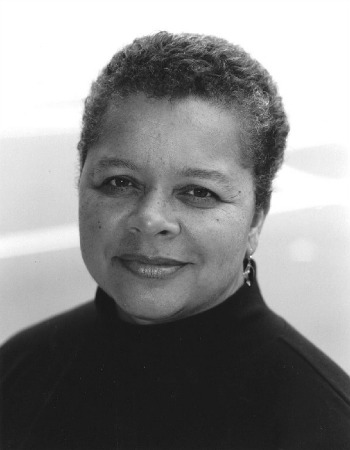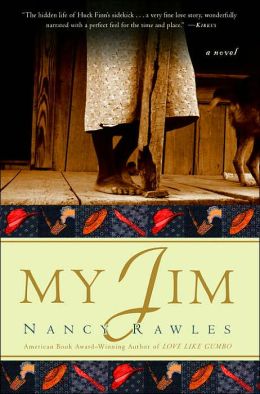 This 2013 Independence Day I would like to celebrate writer Nancy Rawles and her historical novel, My Jim. A beautiful book, an important story, this novel is written in the voice reminiscent of oral history of an eighteenth century slave wife, Sadie, whose husband, Jim, flees captivity when confronted with the prospect of being sold; and sails down the Mississippi River with Huck Finn from The Adventures of Huckleberry Finn.
This 2013 Independence Day I would like to celebrate writer Nancy Rawles and her historical novel, My Jim. A beautiful book, an important story, this novel is written in the voice reminiscent of oral history of an eighteenth century slave wife, Sadie, whose husband, Jim, flees captivity when confronted with the prospect of being sold; and sails down the Mississippi River with Huck Finn from The Adventures of Huckleberry Finn.
This book will open and pierce your heart, leave you awed.
Q: Will you share with us where the inspiration for your novel MY JIM came from?
I didn’t learn anything meaningful about the history of slavery until I was in college. In grade school and in high school, the whole subject was treated as a tragic, embarrassing episode that need not be explained. Or it was presented in satire, ala Huck Finn. I wasn’t introduced to slave narratives until I was an adult. I still find them to be the most breathtaking and beautiful books I have ever read. But unlike the narratives, which tell the stories of people who escaped, I wanted to tell the far more common story of someone who didn’t, someone who didn’t triumph in the end but who did survive. Her survival was largely due to the fact that she had loved and been loved, so she had experienced a glimmer of freedom that allowed her to keep going after she’d lost everyone and everything.
Q: I love the style of writing you wrote the novel in, it reads like oral history. How did you come to decide to write in this voice? What challenges, if any, did you encounter when writing it this way?
I wanted My Jim to read like oral history, so I’m glad you’ve found it to be so. I read and listened to many oral  histories before beginning to write. I studied the oral histories of former slaves, mostly for the emotional content of what they were saying. I found that they rarely spoke in terms of their feelings, so when they did, it was especially powerful. Mostly, they just reported what happened to them. The language was spare and clipped, as though they didn’t wish to recall a past that was so painful. When I started to write, I paid attention to how the book would sound if it were read aloud. I wanted there to be a rhythm and beat that is more associated with storytelling than with writing. That’s why the only punctuation I used was the full stop, the period. In My Jim, the period serves the same function as a line break serves in poetry.
histories before beginning to write. I studied the oral histories of former slaves, mostly for the emotional content of what they were saying. I found that they rarely spoke in terms of their feelings, so when they did, it was especially powerful. Mostly, they just reported what happened to them. The language was spare and clipped, as though they didn’t wish to recall a past that was so painful. When I started to write, I paid attention to how the book would sound if it were read aloud. I wanted there to be a rhythm and beat that is more associated with storytelling than with writing. That’s why the only punctuation I used was the full stop, the period. In My Jim, the period serves the same function as a line break serves in poetry.
Q: Also the structuring of the novel is unique, how did you come to organize the book by starting each chapter with a pertinent object? Or what inspired it?
I became very taken with the idea of what possessions must have meant to people who were themselves treated as possessions, people who had been stolen and sold and kept and discarded. I imagined that the few things they could hold onto and carry with them must have become enormously important. In the story, the central character is Jim’s wife Sadie. She carries with her – from slavery to freedom – a small piece of his hat, a fruit knife her mother gave her as a child, a shard of clay from a sacred bowl that her master broke to punish her, and the tooth of her youngest child, which she pulled just before he was taken away. These items, along with a few others, she keeps in a jar. They are her secrets, of no importance to anyone but her, until she shares them with her granddaughter to whom she tells her story.
Q: It is a heart touching story.Were there parts difficult to write? If so, will you share with us those parts and why they were so hard to write?
Much of My Jim was very difficult to write. In fact, there are a few segments that I am loathe to even read. Certainly anything that involved the daily torment of working as a slave and the suffering that comes with not being able to protect your family or keep your children close, all of those sections were extremely difficult to write.
Q: Will you share with us your writing process?
Invariably, any book I write involves research, so I research for about six months, just enough to get going, and I use that initial research to develop characters, story, style, and structure. Once I’ve decided these basics, I delve in, working straight through until I’ve got a first draft. If I come to a place in the writing where I don’t quite know what to do, I leave it blank and keep going. The first draft is generally about half as long as the final draft. When I’ve completed the first draft, I know how the book will end. So, I work backwards now, making sure all the proceeding chapters lead to the last one. Then, I identify all of the problems with the story, most of which are structural, some of which involve the plot or the characters. I go back to the beginning. I believe that problems arise because the beginning is not all it needs to be. I rewrite the beginning many times. After that, I spend some more time researching, to fill in the places I left blank and to correct whatever isn’t accurate. Then, I ask a trusted few to read what I have. This usually leads to many additions (where I’ve been too cryptic) and subtractions (where I’ve become attached to words that aren’t necessary to the telling of the story. I do another draft or two, then call it quits. I think it’s important to come to the end of things.
Q: Do you have any mementos or rituals you do before/while writing?
I love to swim, and when I’m trying to solve a problem with a piece of writing, I sometimes swim laps. I let my mind wander as I move through the water. I go places I can’t go when I’m sitting at my desk.
Q: Can you share with us what you are currently working on?
I recently published a rather quirky novel about a public school teacher who’s losing her mind due to the madness that passes for educational reform. It’s called Miz Sparks Is on Fire and This Ain’t No Drill. Teachers thoroughly relate to Miz Sparks, who has to navigate the emotionally-treacherous waters of an urban elementary school. At the same time, she’s facing her own personal crisis, which (as every teacher knows) must be put aside to deal with the struggles of her students. The book is written in emails and text messages and PTA minutes and school assemblies and student newspapers and bad poetry, all the styles of communication you’ll find in a school. So, right now, I’m just enjoying talking to readers about Miz Sparks and about education in general.
Thank you Nancy for the interview!
Buy MY JIM (See sidebar for link)!
